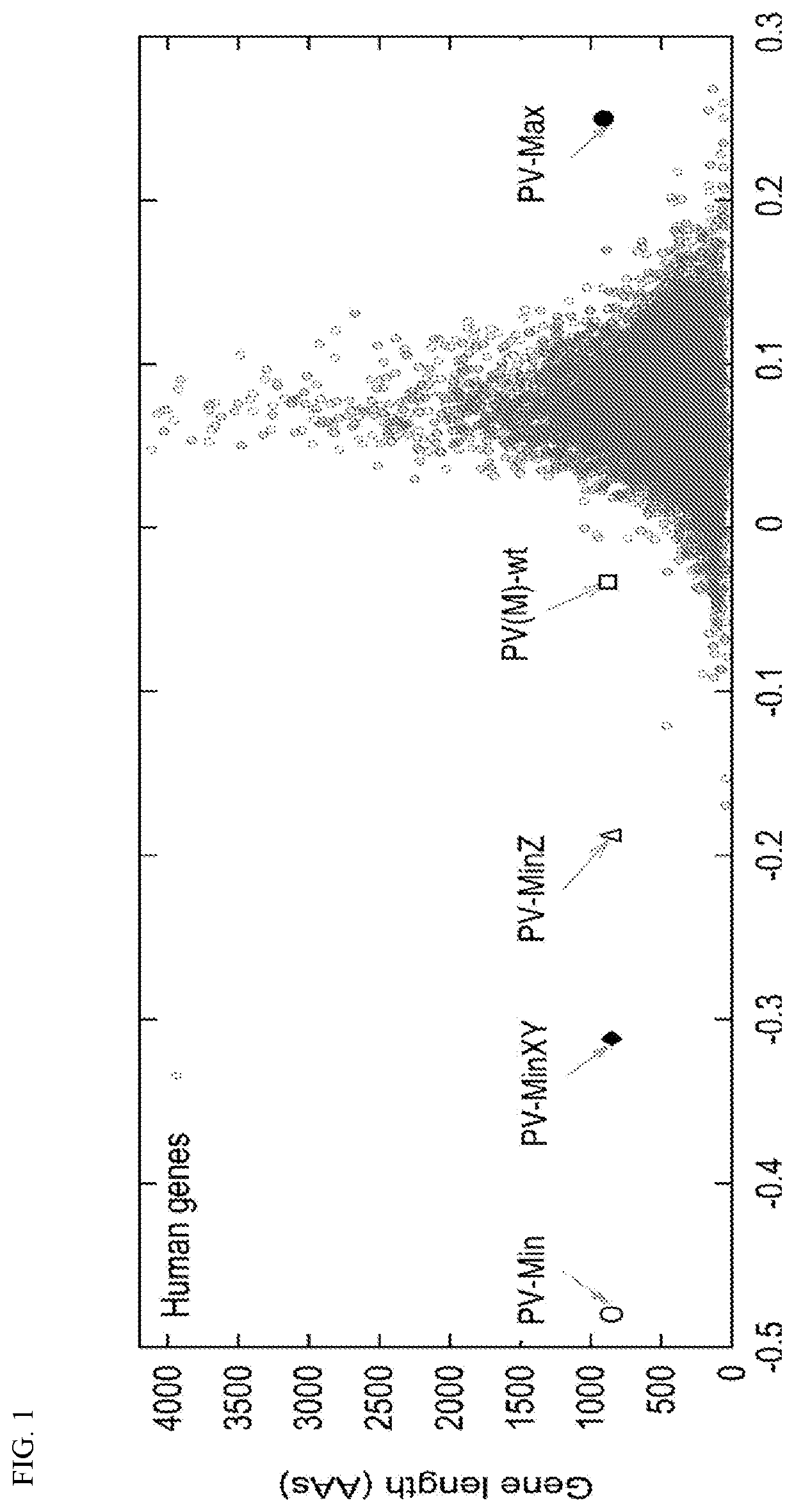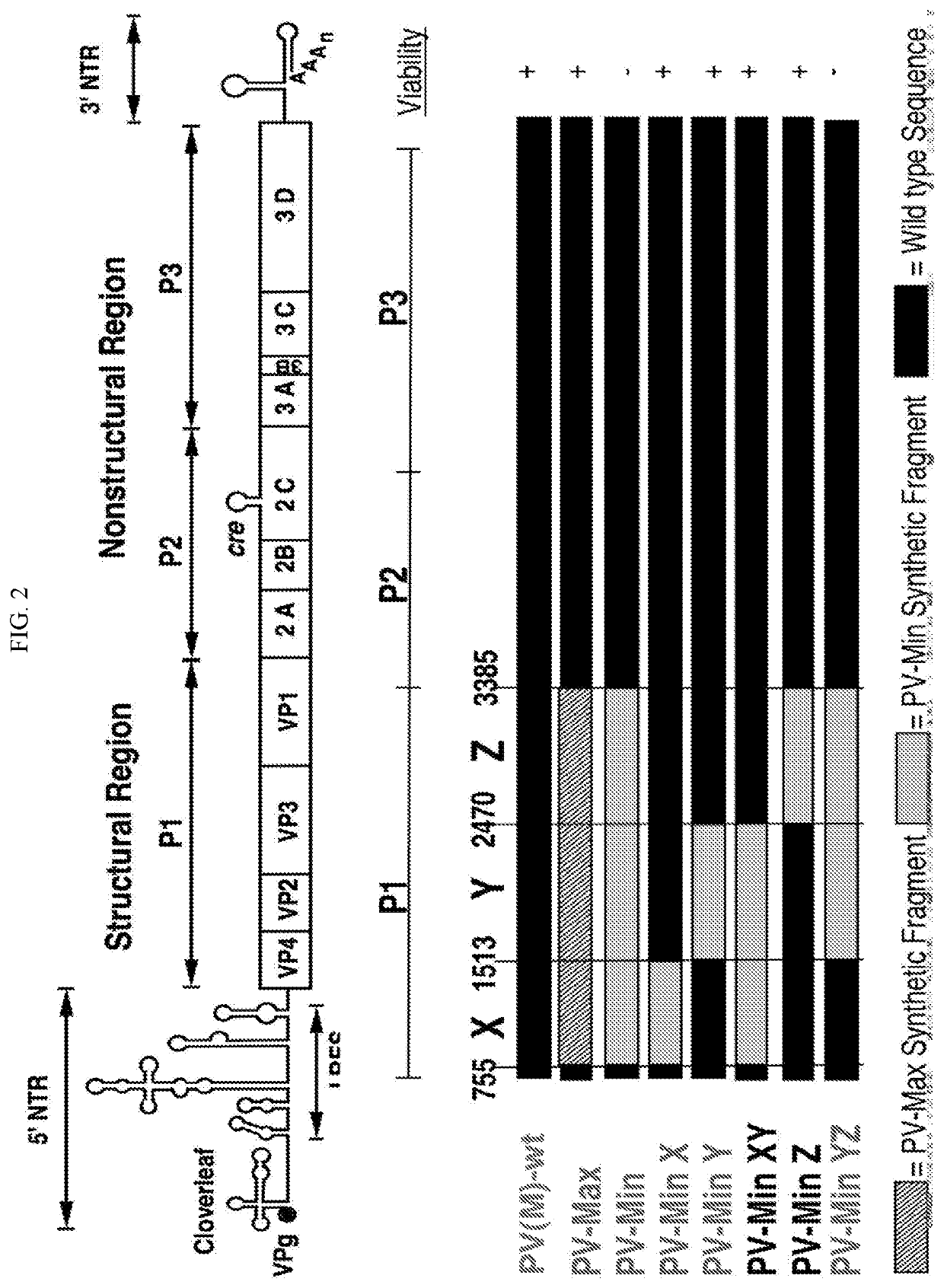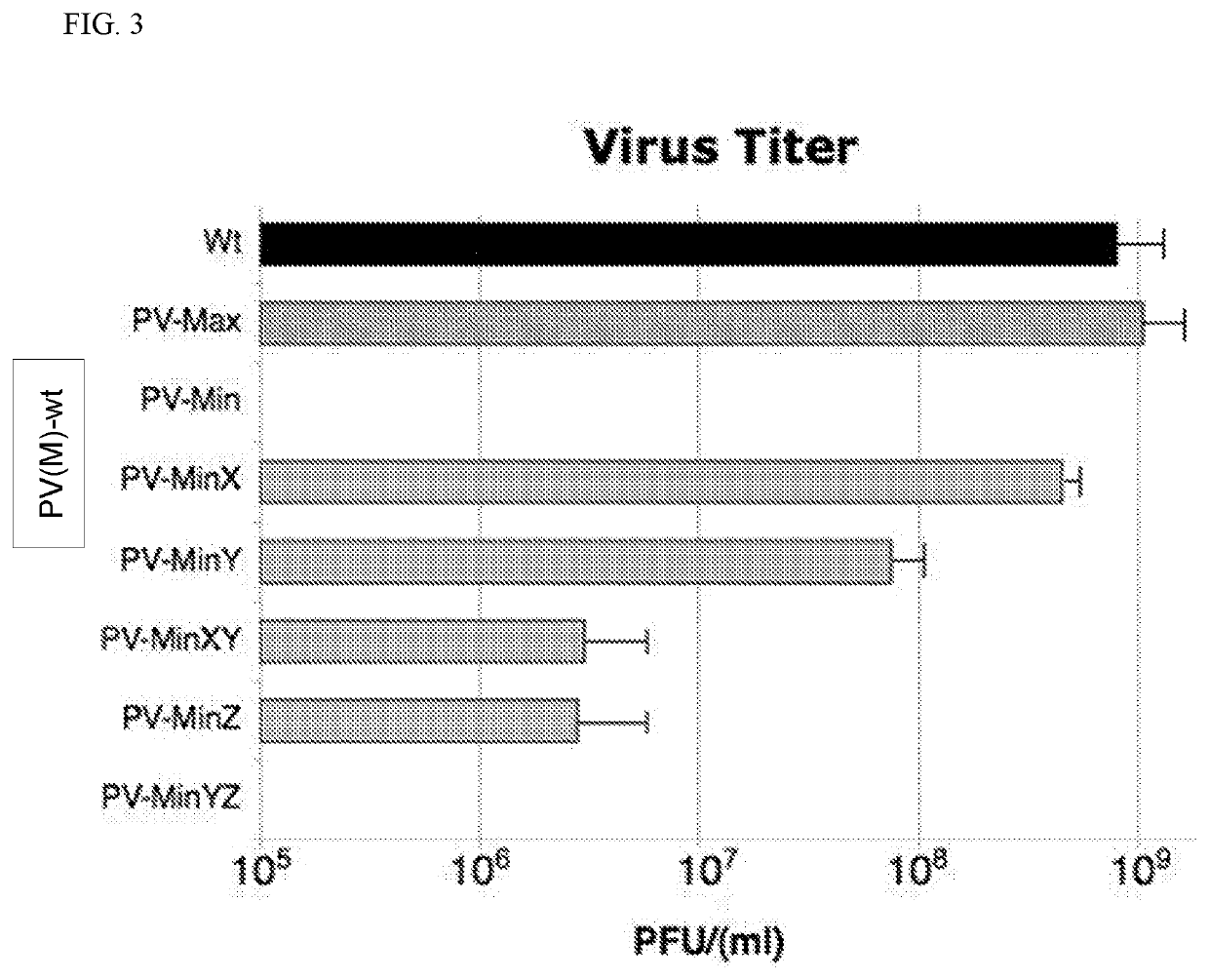Recombinant virus with codon-pair deoptimized region and uses thereof for the treatment of cancer
a technology of recombinant virus and codon-pair, which is applied in the field of modified viruses, can solve the problems of relatively short viral genome, high production cost, and high cost, and achieve the effects of slowing down the growth of the second cancer, reducing the likelihood of recurrence of the malignant tumor, and reducing the likelihood of having a second cancer
- Summary
- Abstract
- Description
- Claims
- Application Information
AI Technical Summary
Benefits of technology
Problems solved by technology
Method used
Image
Examples
example 1
Modification of PV Sequences to Alter Codon Pair Score Relative to Human Codon Pair Bias
[0305]Our algorithm was given the input of the DNA coding sequence for the P1 structural region of poliovirus type-1 Mahoney strain (PV(M)-wt), and the CPB of this region was customized (FIG. 2). After customization using simulated annealing, we produced two novel segments with shuffled codons and thus novel codon-pairs. The first design was PV-Max which had a positive CPB of +0.246. This positive CPB indicated that PV-Max utilized, on average, over-represented codon-pairs. The second design was PV-Min, which had a negative CPB of −0.474. This negative CPB indicated that PV-Min utilized, on average, under-represented codon-pairs (FIG. 1). The first four codons (12 nucleotides) were not changed in PV-Min and PV-Max and left the same as the wild type poliovirus codons. This was done so that translation might initiate equally in all constructs. Also, the P1 region was selected as a suitable region f...
example 2
Construction of Codon Pair Deoptimized Polioviruses
[0307]Plasmids containing the cDNA of the resulting recombinant virus of the above-mentioned genotype or any other variant were amplified, purified and digested with the restriction endonuclease FspI for linearization (this endonuclease cuts within vector sequences). The resulting linearized cDNA (which contains a recognition motif for the DNA-dependent RNA polymerase T7 preceding the 5′ insertion site of the virus cDNA) was used for in vitro transcription using T7 polymerase to produce full-length viral RNA. Viral RNA thus generated was used to transfect HeLa cells by the Dextran-sulfate method in order to produce infectious virus. Transfected cells were observed for the occurrence of the cytopathic effect indicating productive modified virus infection and infectious virus was propagated in HeLa cells, purified and frozen for indefinite storage.
example 3
Modified Virus is Attenuated Compared to Wild-Type but Grows and Kills Adenocarcinoma Cervical Cancer Cells-HeLa R19 Cells
[0308]After transfecting the five PV-Min derivate RNAs into HeLa R19 cells, each product virus was passaged twice to ensure the virus was properly amplified because RNA transfection is not as efficient as a natural infection by the virus itself. Next, plaque assays were performed to elucidate the apparent PFU / ml titer for each virus (FIG. 3). These subclones yielded viruses which had varying degrees of attenuation. The viruses containing P1 fragments X and Y were each attenuated by 0.8-1 log10; however, when added together they yielded virus PV-MinXY, which was significantly attenuated by 2.5 orders of magnitude. The virus PV-MinZ was also attenuated on the order of 2.5 log10 like PV-MinXY. Thus, when returning the Y fragment to PV-MinZ, the construct PV-YZ failed to yield viable virus (FIG. 3). These varying degrees of attenuation therefore was due to an apparen...
PUM
| Property | Measurement | Unit |
|---|---|---|
| volume | aaaaa | aaaaa |
| volume | aaaaa | aaaaa |
| size | aaaaa | aaaaa |
Abstract
Description
Claims
Application Information
 Login to View More
Login to View More - R&D
- Intellectual Property
- Life Sciences
- Materials
- Tech Scout
- Unparalleled Data Quality
- Higher Quality Content
- 60% Fewer Hallucinations
Browse by: Latest US Patents, China's latest patents, Technical Efficacy Thesaurus, Application Domain, Technology Topic, Popular Technical Reports.
© 2025 PatSnap. All rights reserved.Legal|Privacy policy|Modern Slavery Act Transparency Statement|Sitemap|About US| Contact US: help@patsnap.com



